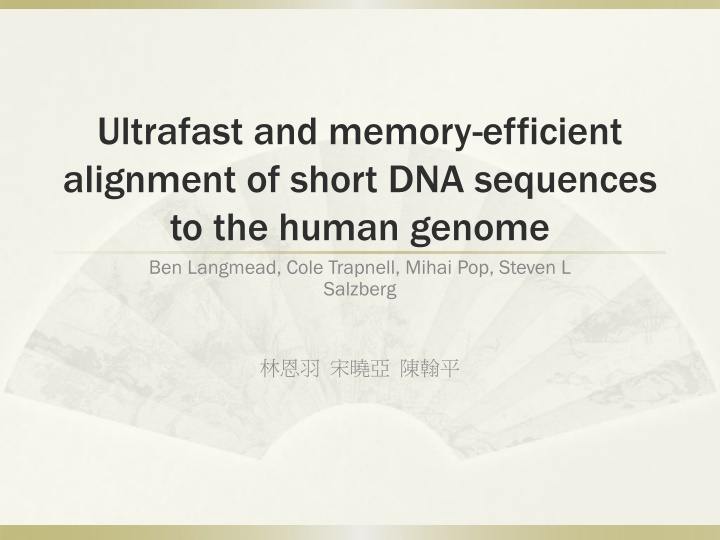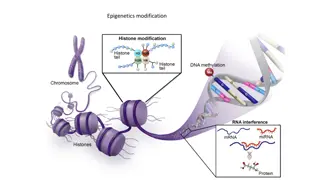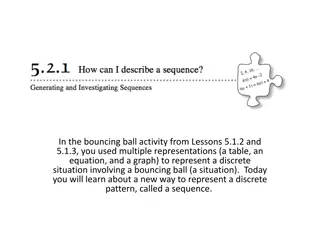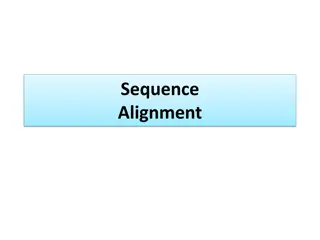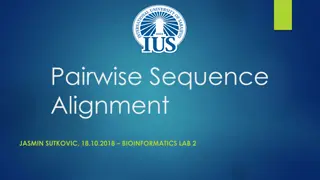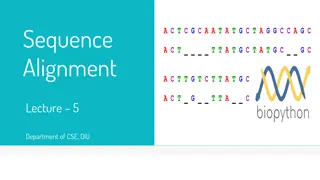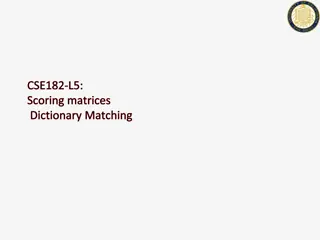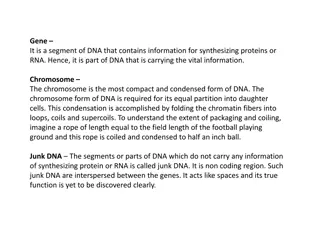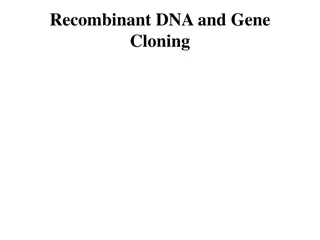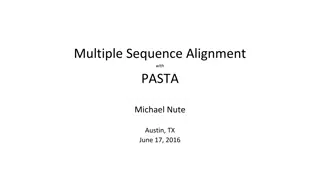Ultrafast and Memory-Efficient DNA Sequence Alignment Study
"This study discusses the development of Bowtie, a tool for aligning short DNA sequences to the human genome. Bowtie offers ultrafast and memory-efficient alignment, outperforming previous methods like Maq and SOAP. The tool achieves high alignment speeds with a small memory footprint, making it suitable for various computational environments."
Download Presentation

Please find below an Image/Link to download the presentation.
The content on the website is provided AS IS for your information and personal use only. It may not be sold, licensed, or shared on other websites without obtaining consent from the author.If you encounter any issues during the download, it is possible that the publisher has removed the file from their server.
You are allowed to download the files provided on this website for personal or commercial use, subject to the condition that they are used lawfully. All files are the property of their respective owners.
The content on the website is provided AS IS for your information and personal use only. It may not be sold, licensed, or shared on other websites without obtaining consent from the author.
E N D
Presentation Transcript
Ultrafast and memory-efficient alignment of short DNA sequences to the human genome Ben Langmead, Cole Trapnell, Mihai Pop, Steven L Salzberg
Rationale Rationale Existing method(Maq, SOAP, ) computational cost of many short reads is large Align the 140 billion bases Maq: 5 cpu-months SOAP: 3 cpu-years Clear need for new tools that consume less time and computational resources
Bowtie Bowtie Ultrafast, memory-efficient Burrows-Wheeler indexing 25 million reads per CPU hour with a memory footprint of approximately 1.3 GB
Bowtie Bowtie Aligns 35-base pair reads 25 million / hour (35 times faster than Maq / 300 times faster than SOAP) Small footprint allows Bowtie to run on PC with 2 GB of RAM Multiple processor cores to achieve greater alignment speed
Compromise Compromise Fail to align a small number of reads with valid alignment, if those reads have multiple mismatches Options that increase accuracy at cost some performance
Environment Environment PC PC Server Server Intel Core 2 2.4GHz AMD Opteron (4-core) 2GB RAM 32GB RAM Red Red Hat Enterprise Linux AS Release 4 Hat Enterprise Linux AS Release 4
Evaluation Evaluation Wall-clock time, CPU time Time to build index is excluded Reuse pre-computed index Human Chimp Mouse Dog Rat Arabidopsis thaliana
Comparison to SOAP and Comparison to SOAP and Maq Maq 1,000 Genomes project (NCBI Short Read Archive: SRR001115) 8.84 million reads Trimmed to 35bp Aligned to Human Reference Genome (build 36.3)
Bowtie V.S. SOAP Bowtie V.S. SOAP 99.7% were aligned by both 0.2% were aligned by Bowtie 0.1% were aligned by SOAP Bowtie V.S. Bowtie V.S. Maq 96.0% were aligned by both 0.1% were aligned by Bowtie 3.9% were aligned by Maq Maq Maq is more flexible allows 3 mismatches
Maq Maq with filtered read set with filtered read set poly-A artifacts catfilter 438,145 reads
Read length and performance Read length and performance Lengths of reads supported: Bowtie 1024bp Maq 127bp (v0.7.0) SOAP 60bp Align 36-bp set, 50-bp set, 76-bp set to human genome 36-bp set (SRR003084) 50-bp set (SRR003092) 76-bp set (SRR003196)
Parameters Parameters Bowtie -v 2 allows 2 mismatches [SOAP] --maxns 5 filter out reads with 5 or more no- confidence bases [SOAP] -z only forward index is resident in memory at one time [Maq]
Parallel performance Parallel performance Bowtie allows the user to specify a desired number of threads The memory image of the index is shared by all threads
Parallel performance Parallel performance
Index building Index building Bowtie uses a flexible indexing algorithm that can be configured to trade off between memory usage and running time
Discussion Discussion Unlike SOAP, Bowtie s 1.3 GB memory footprint allows it to run on a typical PC with 2 GB of RAM Unlike many other short-read aligners, Bowtie creates a permanent index of the reference that may be re-used across alignment runs
Discussion Discussion Bowtie s speed and small memory footprint are due chiefly to its use of the Burrows- Wheeler index Does not yet support paired-end alignment or alignments with insertions or deletions
